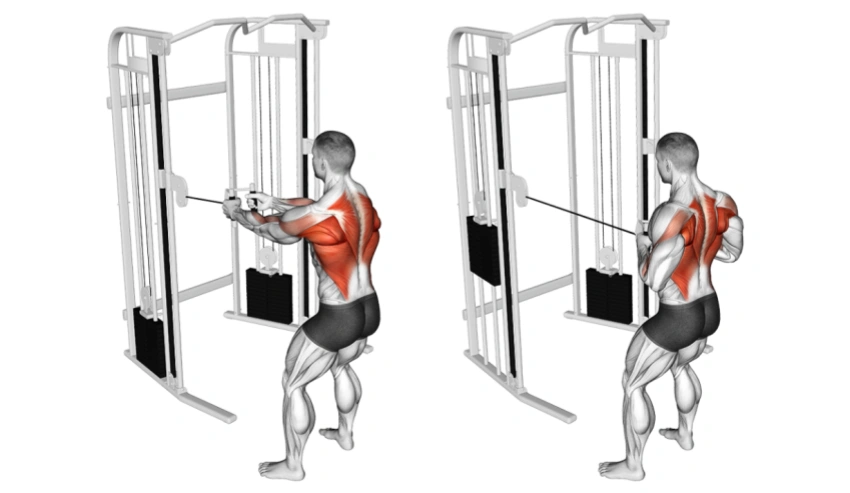Cable shoulder workouts are a great choice for building strong shoulders. They offer smooth, controlled movements that free weights can’t match. Cables keep tension on your muscles throughout the exercise. This leads to better results. You can target all parts of your shoulders—front, middle, and rear. The exercises are easy to adjust. They fit into any workout routine.
Why Choose Cable Shoulder Workouts?
Cable shoulder workouts are great because they provide constant tension throughout the movement. This makes them effective for building muscle and strength. Here are the main reasons to choose cables for your shoulder training:
- Constant Tension: Cables keep the tension on your muscles throughout the entire range of motion, leading to better muscle activation.
- Versatility: You can target all parts of the shoulder—front, middle, and rear—with just a few exercises.
- Adjustable Resistance: Cables are easy to adjust, making them perfect for all fitness levels.
Top Cable Shoulder Exercises You Should Try
Cable shoulder exercises are effective for targeting all parts of the deltoid. Here are six top exercises you can add to your workout:
Side Cable Raise
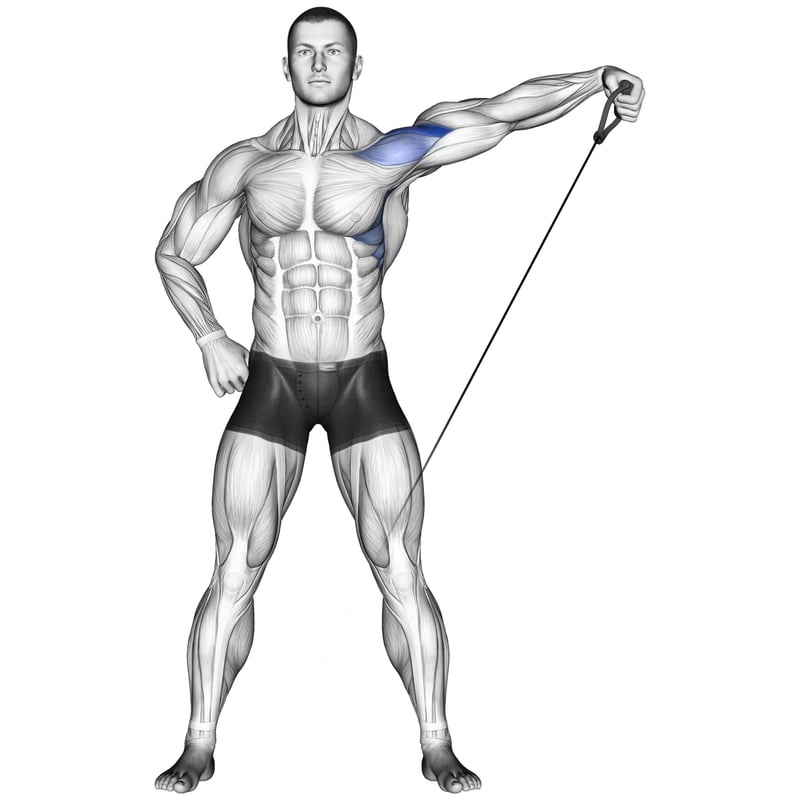
- Muscles Worked: Middle deltoid
- Why It’s Good: Targets the middle of your shoulder for width and definition.
- How to Do It: Stand with your side to the cable machine. Grip the handle with one hand. Raise your arm to shoulder height, keeping a slight bend in the elbow. Lower slowly and repeat.
Front Cable Raise
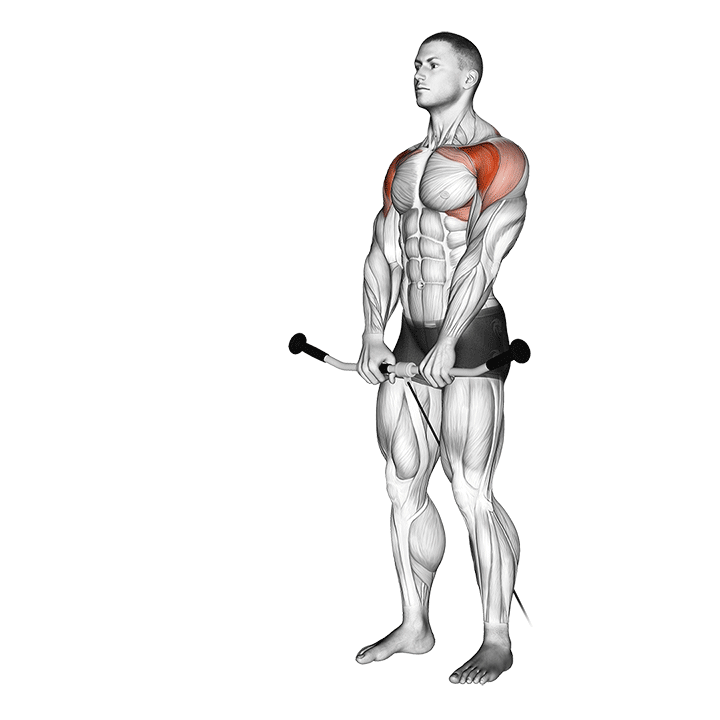
- Muscles Worked: Front deltoid
- Why It’s Good: Focuses on the front of your shoulder for overall shoulder development.
- How to Do It: Stand facing the cable machine. Hold the handle with both hands. Raise your arms straight in front of you to shoulder height. Lower with control and repeat.
Cable Face Pull

- Muscles Worked: Rear deltoid
- Why It’s Good: Strengthens the rear deltoids and improves posture.
- How to Do It: Attach a rope to a high pulley. Grip the rope with both hands. Pull the rope towards your face, elbows high and out. Slowly return to the start.
Cable Overhead Press
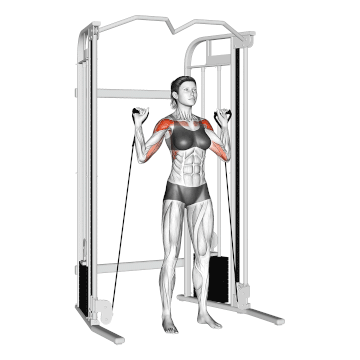
- Muscles Worked: All parts of the deltoid
- Why It’s Good: A great alternative to barbell presses, hitting all three parts of your shoulder.
- How to Do It: Set the cables at the lowest position. Grab the handles and press them overhead, fully extending your arms. Lower slowly and repeat.
Reverse Cable Fly
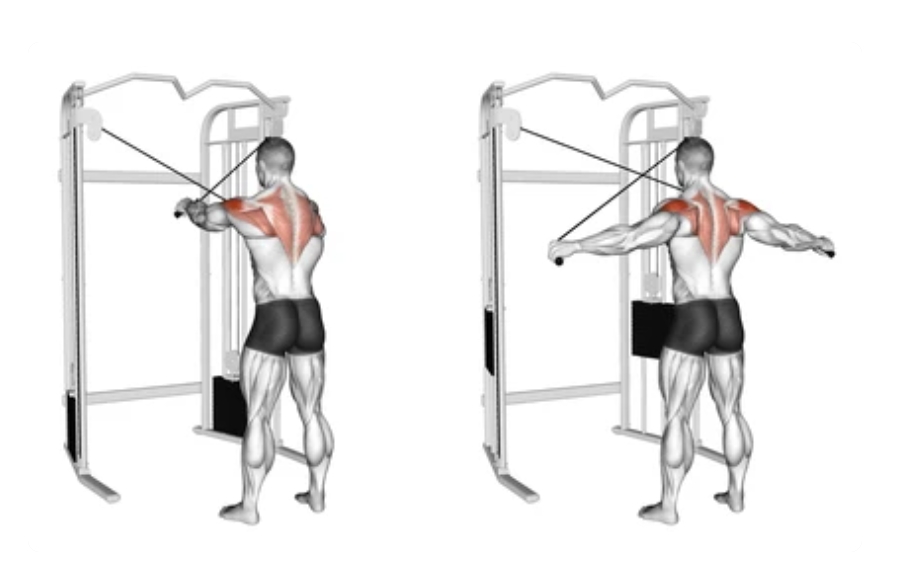
- Muscles Worked: Rear deltoid
- Why It’s Good: Helps isolate the rear deltoid for better shoulder balance.
- How to Do It: Stand with your feet hip-width apart. Grip the cables with both hands in front of you. Open your arms out to the sides, keeping a slight bend in your elbows. Squeeze your shoulder blades together and return slowly.
Cable Upright Row
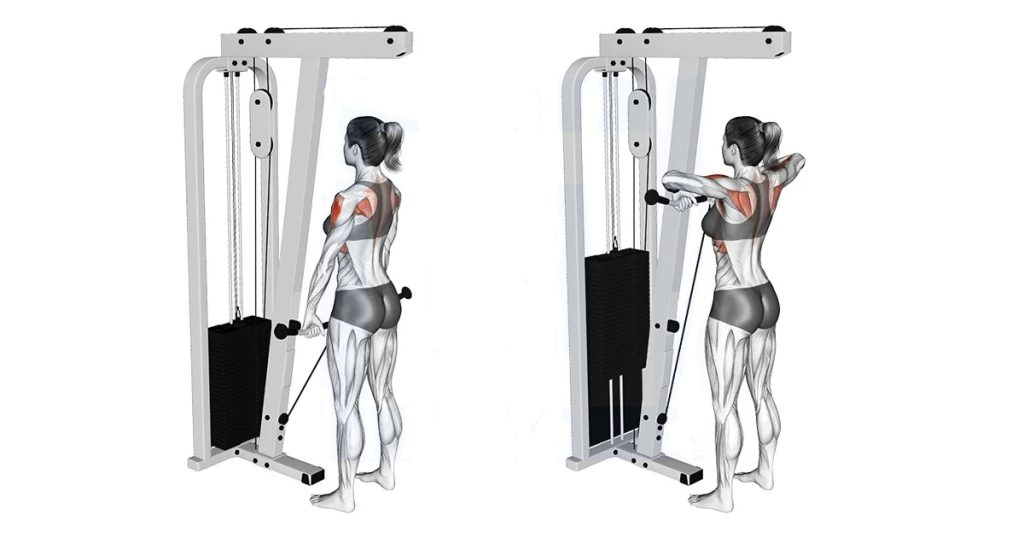
- Muscles Worked: Front and middle deltoids, traps
- Why It’s Good: A great exercise for building both shoulder and trap strength.
- How to Do It: Attach a straight bar to the low pulley. Stand facing the machine and grip the bar with both hands. Pull the bar straight up towards your chin, keeping your elbows higher than your wrists. Lower the bar slowly back to the starting position and repeat.
Tips for Maximizing Your Cable Shoulder Workout
To maximize your cable shoulder workout, focus on these key points:
| Tip | Description |
|---|---|
| Focus on Form | Keep your core engaged and move with control to avoid injury and maximize gains. |
| Gradually Increase Weight | Start with a manageable weight and slowly add more as you get stronger. |
| Vary Angles | Change the height of the cables to target different parts of the shoulder. |
| Track Progress | Record your weights and reps to measure progress and challenge yourself. |
Cable shoulder workouts are a great way to build strength, size, and definition in your shoulders. By using a variety of exercises and focusing on proper form, you can effectively target all parts of your deltoids. Remember to adjust the weight, vary your angles, and track your progress to continue challenging yourself. With consistent effort and smart training, you’ll see great results.

I’m Riley Williams, an editor for Leadman Fitness where we engineer bespoke strength equipment tailored to unique training goals. My expertise lies in home gym solutions, mobility tools, and injury-prevention gear, shaped by 8 years as a strength coach and rehab specialist. I know how subtle design flaws—a knurling pattern that blisters hands or a bolt that loosens mid-session—can derail progress.
I bridge the gap between our production team and everyday athletes: surveying garage gym owners, analyzing wear patterns on returned gear, and pressure-testing prototypes with physical therapists. My content cuts through marketing hype, focusing on practical fixes—whether you’re retrofitting a basement gym or sourcing commercial equipment that survives 24/7 use. If it’s in our catalog, I’ve stress-tested it myself.
